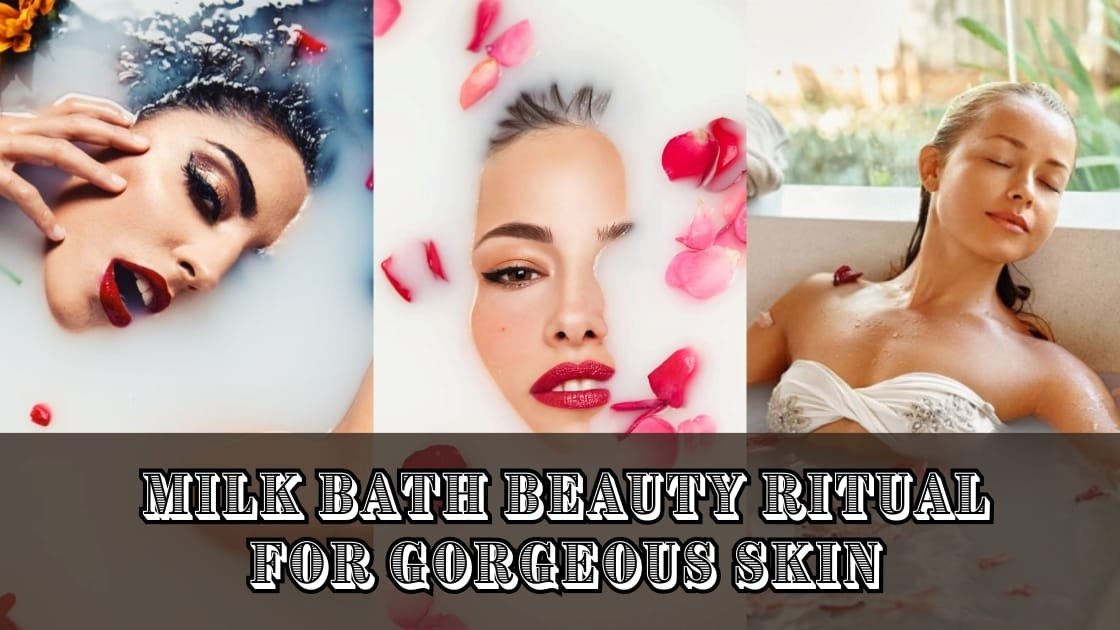Discover the Secrets of this Timeless Beauty Ritual for Radiant, Silky SkinThe Milk Bath beauty ritual has been a popular practice for c
Discover the Secrets of this Timeless Beauty Ritual for Radiant, Silky Skin
The Milk Bath beauty ritual has been a popular practice for centuries, known for its incredible benefits in promoting soft, radiant, and youthful skin. This comprehensive guide will delve into the history of the Milk Bath, its benefits, and how to create your own luxurious Milk Bath at home. By the end of this article, you’ll understand why this centuries-old beauty ritual is trending and how it can help you achieve gorgeous skin.
I. The History of the Milk Bath Beauty Ritual
A. Ancient Egyptian Origins
The Milk Bath beauty ritual dates back to ancient Egypt, where it was believed that Cleopatra, the epitome of beauty and elegance, regularly indulged in milk baths to maintain her youthful appearance. She is said to have used donkey milk, which is high in vitamins and minerals, for her daily baths.
B. Adoption by the Romans and Greeks
The Romans and Greeks also recognized the benefits of milk baths for skin health. Roman empresses and Greek philosophers like Hippocrates praised the virtues of milk baths for their healing and beautifying properties. As a result, the Milk Bath beauty ritual became popular among the nobility and the upper class.
C. Modern-Day Resurgence
Today, Milk Bath beauty rituals have experienced a resurgence in popularity as people rediscover their benefits for achieving gorgeous skin. Spas and skincare enthusiasts worldwide are turning to milk baths as a natural, effective way to rejuvenate and nourish the skin.
II. Benefits of Milk Bath for Gorgeous Skin
A. Lactic Acid: The Star Ingredient
Lactic acid, a type of alpha hydroxy acid (AHA), is the star ingredient in milk baths. It is derived from the natural fermentation of milk and is known for its ability to exfoliate and improve skin texture gently. By dissolving the bonds between dead skin cells, lactic acid helps to reveal fresher, more radiant skin.
B. Moisturization and Hydration
Milk baths are also rich in natural fats and proteins that can help to moisturize and hydrate the skin. The fats in milk act as a natural emollient, locking in moisture and creating a protective barrier on the skin’s surface. This helps to prevent dryness and leaves your skin feeling soft and smooth.
C. Soothing Effects
The soothing properties of milk baths can help to alleviate skin irritation and inflammation. They are particularly beneficial for those with sensitive skin, eczema, or psoriasis. The calming effects of a milk bath can help to reduce redness and itchiness, providing much-needed relief.
D. Gentle Exfoliation
Milk baths offer a gentle, natural exfoliation that helps to remove dead skin cells and promote cell turnover. As a result, your skin will appear more youthful, vibrant, and glowing.
III. Creating Your Own Luxurious Milk Bath at Home
A. Ingredients You’ll Need
To create your own Milk Bath beauty ritual at home,you’ll need the following ingredients:
Milk powder (whole or goat milk)
Baking soda
Epsom salt
Essential oils (optional)
B. How to Prepare Your Milk Bath
Follow these simple steps to create a luxurious Milk Bath experience at home:
Fill your bathtub with warm water.
Mix 2 cups of milk powder, 1 cup of baking soda, and 1 cup of Epsom salt in a bowl.
Slowly pour the mixture into the warm water, stirring to ensure even distribution.
Add a few drops of your favorite essential oil for an aromatherapeutic experience (optional).
Soak in the milk bath for 20-30 minutes, allowing the ingredients to work their magic on your skin.
C. Adding Personal Touches
Personalize your Milk Bath experience by incorporating additional ingredients that cater to your skin’s specific needs. Some popular add-ons include:
Honey: Rich in antioxidants, honey can help to nourish and protect your skin.
Oatmeal: A natural anti-inflammatory, oatmeal can help to soothe irritated or sensitive skin.
Dried flowers: Adding dried flowers like lavender or rose petals can enhance the relaxation experience and provide additional skin benefits.
IV. Milk Bath FAQs
Q: Is a Milk Bath suitable for all skin types?
A: Yes, Milk Baths are generally suitable for all skin types, including sensitive skin. However, it’s always a good idea to perform a patch test before trying any new skincare treatment.
Q: How often should I take a Milk Bath for the best results?
A: To maintain gorgeous skin, you can incorporate Milk Baths into your self-care routine once or twice a week.
Q: Can I use fresh milk instead of milk powder?
A: Yes, you can use fresh milk as an alternative to milk powder. Opt for whole milk or goat milk for the best results.
The centuries-old Milk Bath beauty ritual offers a luxurious and natural way to achieve gorgeous skin. With its soothing, exfoliating, and moisturizing properties, a Milk Bath can help you maintain a youthful, radiant complexion. By creating your own Milk Bath at home, you can indulge in this timeless practice and experience its skin-transforming benefits for yourself. So, go ahead and treat yourself to a relaxing, nourishing, and beautifying Milk Bath experience.
